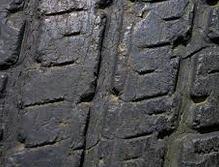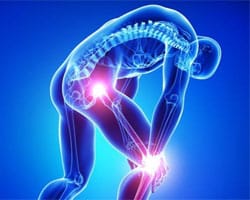 Wear and tear is the act and consequence of wearing out or wearing out . This verb refers to consuming or deteriorating something little by little through its use or through some type of contact or friction. It can also refer to removing power or strength .
Wear and tear is the act and consequence of wearing out or wearing out . This verb refers to consuming or deteriorating something little by little through its use or through some type of contact or friction. It can also refer to removing power or strength .
For example: “I think that the deterioration of the relationship began with coexistence” , “The local team felt a deterioration due to the series of matches and ended up losing by a landslide” , “The government is betting on waiting for time to pass to achieve the erosion.” of the protests.”
The notion of wear can be used in a physical sense or symbolically. The interaction between two materials can cause the erosion of one or both of them: this specific, physical degradation is wear . As a car drives, for example, its tires experience wear due to friction with the pavement and the ground. After a certain time, it becomes necessary to replace worn tires with new ones.
In other contexts, wear is not material. Suppose a footballer has been playing for the same team for ten years. The athlete, as the seasons go by, begins to have increasingly frequent conflicts with the club's directors. The parties can no longer reach an agreement easily and anger and disappointments accumulate. That is why journalists affirm that the bond between the player and the club shows wear and tear : it does not have the solidity or strength of yesteryear.
The wear and tear of the body's joints is one of the most relevant issues for older people, but we should all be attentive to the signs of this inevitable phenomenon: as soon as we start to feel pain in our wrists or knees, for example, we should ask shift with a specialist. The best thing in these cases is to prevent wear; If we cannot achieve this, then we must apply appropriate treatment.
The wear and tear of the joints is a very important problem, since it opens the doors to arthritis and athrosis , two disorders that cause unbearable pain and can greatly limit people's lives, especially those who need their limbs to carry out activities. out their favorite activities.
The reasons why a joint can begin to wear out are many, and among them the following stand out:
 * aging : advancing age brings with it a large number of complications, since the body loses its level of performance and cannot maintain itself in optimal conditions with the same ease as in childhood or adolescence;
* aging : advancing age brings with it a large number of complications, since the body loses its level of performance and cannot maintain itself in optimal conditions with the same ease as in childhood or adolescence;
* genetics : joint wear and tear in women can occur due to the inheritance of a specific gene, which triggers osteoarthritis in 10% of cases;
* overweight : it is known that the real problem of obesity does not lie in aesthetic issues but in the repercussions it can have on health . Since the weight of our body falls mainly on our legs, being overweight increases the wear and tear on the hips and knees;
* carrying too much weight : similarly to the previous point, people who carry very heavy objects too frequently, usually for work reasons, increase the wear and tear on their joints.
Among the most common symptoms of joint wear and tear are a lack of flexibility in movement, a feeling of stiffness in the morning, recurrent pain in the same area, a frequent feeling of tiredness and weakness, severe pain in the bones. and muscles, redness of the joints accompanied by pain to the touch and excessive sweating at night.
